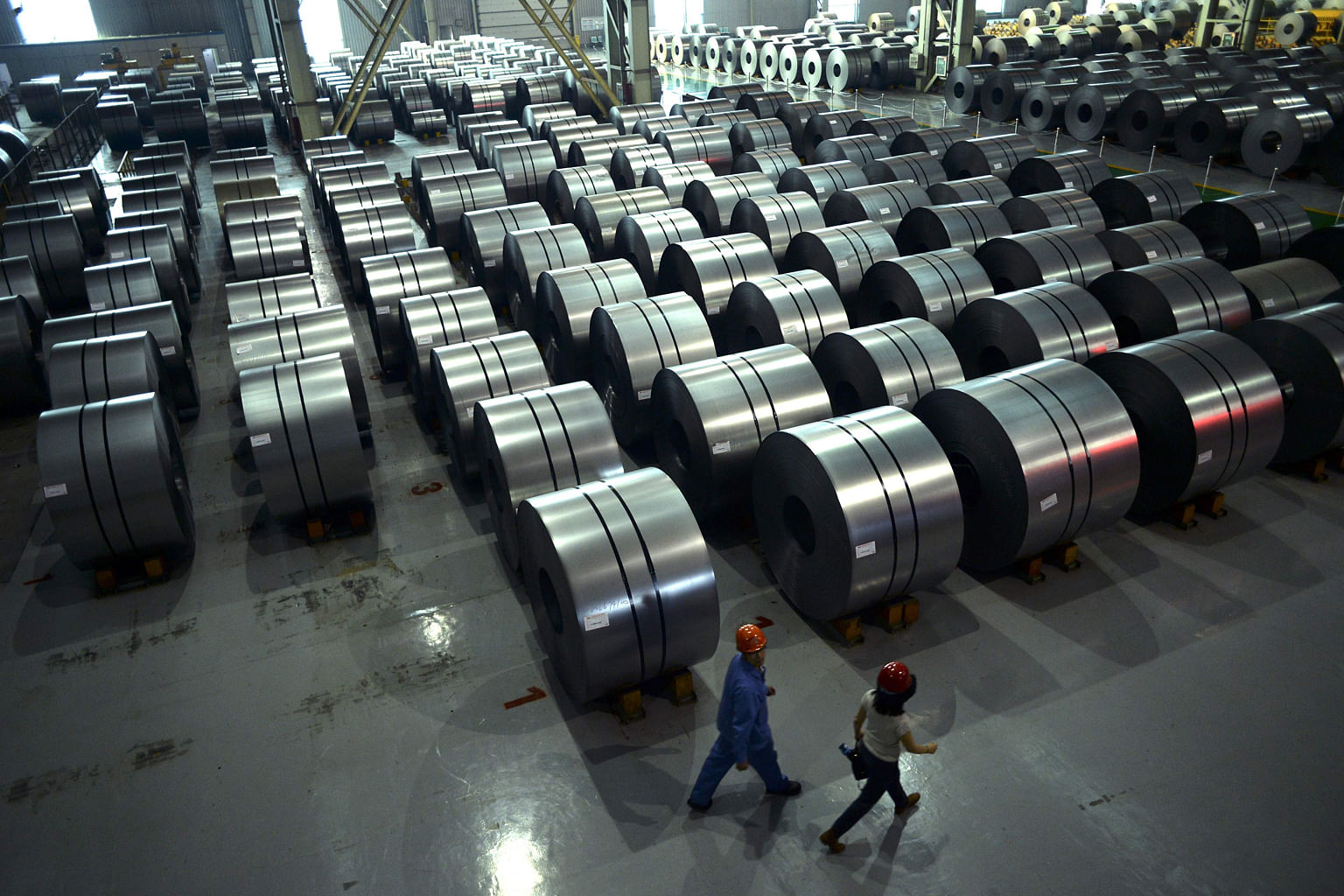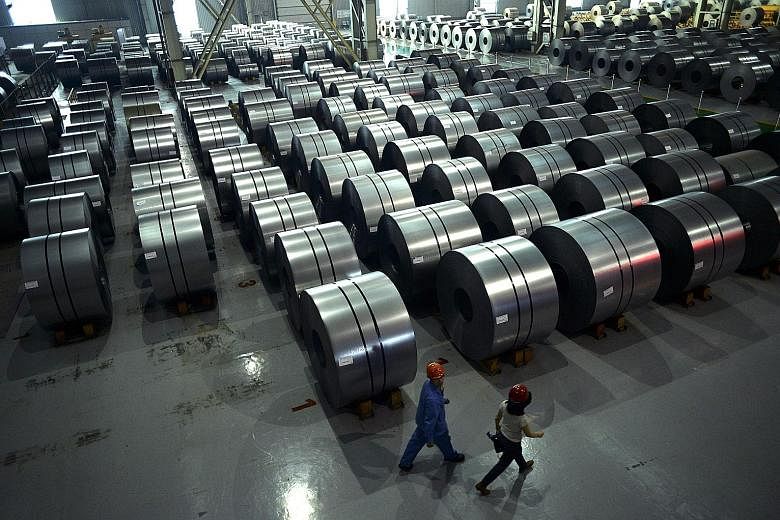Default concerns are on the rise as the credit fundamentals of Asia's debt issuers deteriorate, a result of the prolonged commodity downturn and sputtering growth across the region.
Fourteen Chinese public and private companies have reported various delinquency cases so far this year. Onshore Chinese bond yields are climbing as credit events crunch investor appetite, and a sluggish fundamental backdrop in Singapore bodes ill for credit metrics. Rating agencies have taken note of the weakening environment - Moody's recently downgraded the outlook on China's sovereign funds and the outlook on Singapore banks over economic and asset-quality concerns respectively.
But despite the ongoing macro challenges and uncharacteristic defaults, Asian fixed income continued to perform strongly last month. The JP Morgan Asia Credit Index (JACI) returned 0.75 per cent for the month, bringing the year-to-date total return to 4.3 per cent, with credit spreads now tightened to 278 basis points. Given the discrepancy between market performance and waning fundamentals, it's reasonable for investors to question whether to chase the rally or let it fade.
On April 11, China Railway Material Group announced the suspension of trading of all its domestic bonds, which are worth 16.8 billion yuan (S$3.5 billion). This is a most high-profile credit event, as the company is a central government-linked state-owned enterprise (SOE) and the amount is significantly larger than in previous cases. It is also emblematic of the woes plaguing unwieldy SOEs operating in problematic old-economy sectors, such as steel, mining, coal and transportation.
Although the Chinese economy is likely to be finding a firmer footing near term, protracted challenges like overcapacity are still rife and continue to plunder the bottom lines of affected businesses. The 14 defaults helped spark a sell-off across the AAA and AA credit curves last month. Yields have since widened 25-30 basis points and spreads could expand even further as supply continues and demand slows down. The recent surge in credit events has prompted regulators to scrutinise issuers' quality and investors are demanding higher premiums.


This situation, however, does not pose systemic risk to China's economy; the total defaulted amount since 2014 is around 28 billion yuan - an insignificant number compared with the massive 15 trillion yuan onshore credit bond market. For context, the onshore default rate is now around 0.3 per cent, up from zero per cent before. And even with the recent yield pick-up, onshore bond yields are still close to record lows. In the next 12 months, monetary policy will also remain accommodative to temper mounting debt pressure, with the possibility of one interest rate cut, 300 to 500 basis points of reserve requirement ratio cuts and aggressive liquidity injections via short-term and medium-term lending facilities.
Nevertheless, investors should stay defensive amid the heightened risk environment and take profit on low single B- rated developers because of their rich valuations and the potential tightening of onshore funding. Shorter-dated bonds from stronger SOEs, certain high-yield bonds and bank tier-two debt are sound options. Avoid industrials issuers and longer-dated bonds from weak non-strategic SOEs.
SINGAPORE BOND ISSUERS FACE RISING CREDIT RISKS
Singapore companies reported lacklustre fourth-quarter results last year: revenues slipped 3 per cent while net profits declined 5 per cent compared with the year before. The muted economic environment has taken its toll, with the offshore and marine sector taking the biggest hit. Credit metrics of corporate Singdollar bond issuers are on a general declining trend as a result.
We estimate that $23 billion of Singdollar bonds will mature this year and next. About 25 per cent of these are from sectors such as oil and gas, industrials, transportation, and metals and mining - all facing downward earnings revisions. Thus, issuers with weak credit quality, such as offshore and marine companies, could face refinancing risk and possible default if they are unable to refinance maturing debt.
As the credit cycle turns, the market will become more selective on credit quality. Lower-quality names should underperform this year as defaults mount, while larger, high-quality issues should shelter investors in the event of deeper credit stress.
For Singdollar investors, opportunities for yield can be found in selected corporate perpetuals and overseas issuers.
A GOOD TIME FOR SPRING CLEANING
The recent strong performance in fixed income is attributed to the dovish tone set by both the United States Federal Reserve and the European Central Bank, the rally in commodity prices and the weakness in the US dollar. The best performers in global emerging markets this year are Brazil (+13.7 per cent), South Africa (+10.5 per cent) and Indonesia (+9.9 per cent).
Within Asia, the most notable performance came from JACI sovereign, which returned 1.37 per cent month-to-date and 8 per cent year-to-date. A standout market is Indonesia, where we believe quasi-sovereign bonds remain the best play on its improving macroeconomic outlook. These have rallied in the past month but their premium to sovereigns remains wide on a historical basis.
Given the heightened credit risk environment, further spread compression could prove difficult. Technical factors such as lower issuance and sustained demand from onshore investors should help cushion the risk of a major sell-off in the near term. Still, investors should book profits from the recent rally in high-beta issues and switch to low-beta ones. Commodity- related and high-beta cyclical issuers are most vulnerable to a pullback. Such issuers continue to face the protracted structural problem of weak demand, compounded by overcapacity and high capital-expenditure costs.
More so than ever, bottom-up bond selection is critical at this mature stage of the Asian credit cycle. Given early signs of an earnings rebound and still constructive valuations, Asia ex-Japan equities currently offer better risk-adjusted returns versus Asia credits. Regionally, we continue to like Chinese Internet stocks, selective banks, cash-flow leaders and stocks with sustainably high dividend yields.
• The writer is Apac regional head at the chief investment office of UBS Wealth Management.


